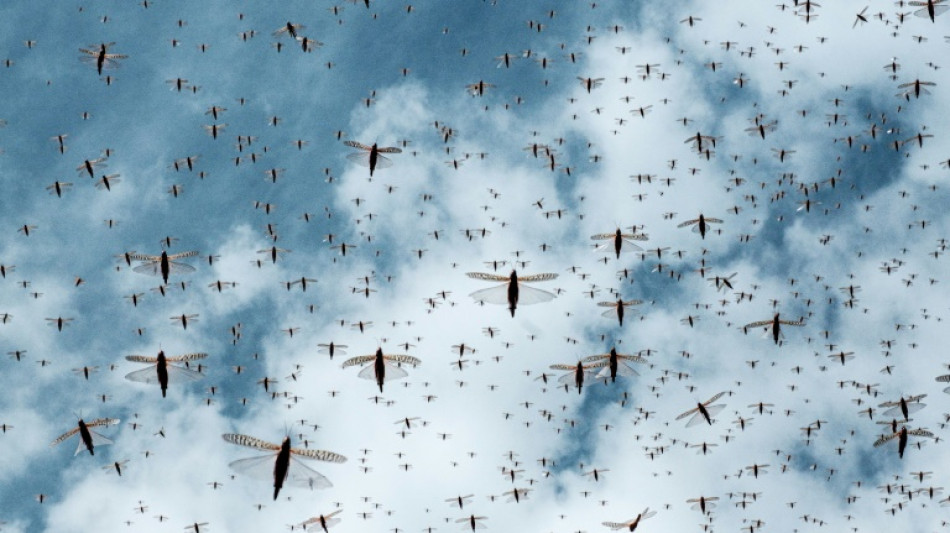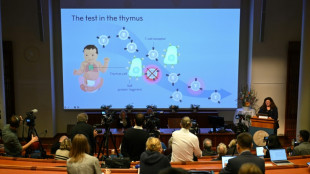
-
 Lyon exact revenge on Arsenal, Barca thrash Bayern in women's Champions League
Lyon exact revenge on Arsenal, Barca thrash Bayern in women's Champions League
-
Trump says 'real chance' to end Gaza war as Israel marks attacks anniversary

-
 Gerrard brands failed England generation 'egotistical losers'
Gerrard brands failed England generation 'egotistical losers'
-
NFL fines Cowboys owner Jones $250,000 over gesture to fans

-
 Bengals sign veteran quarterback Flacco after Burrow injury
Bengals sign veteran quarterback Flacco after Burrow injury
-
New prime minister inspires little hope in protest-hit Madagascar

-
 Is Trump planning something big against Venezuela's Maduro?
Is Trump planning something big against Venezuela's Maduro?
-
EU wants to crack down on 'conversion therapy'

-
 French sex offender Pelicot says man who abused ex-wife knew she was asleep
French sex offender Pelicot says man who abused ex-wife knew she was asleep
-
Trump says 'real chance' to end Gaza war as Israel marks Oct 7 anniversary

-
 UK prosecutors to appeal dropped 'terrorism' case against Kneecap rapper
UK prosecutors to appeal dropped 'terrorism' case against Kneecap rapper
-
Spain, Inter Miami star Alba retiring at end of season

-
 EU targets foreign steel to rescue struggling sector
EU targets foreign steel to rescue struggling sector
-
Trump talks up Canada deal chances with visiting PM

-
 Knight rides her luck as England survive Bangladesh scare
Knight rides her luck as England survive Bangladesh scare
-
Pro-Gaza protests flare in UK on anniversary of Hamas attack

-
 Top rugby unions warn players against joining rebel R360 competition
Top rugby unions warn players against joining rebel R360 competition
-
Outcast Willis 'not overthinking' England absence despite Top 14 clean sweep

-
 Trump says 'real chance' of Gaza peace deal
Trump says 'real chance' of Gaza peace deal
-
Macron urged to quit to end France political crisis

-
 No.1 Scheffler seeks three-peat at World Challenge
No.1 Scheffler seeks three-peat at World Challenge
-
Canadian PM visits Trump in bid to ease tariffs

-
 Stocks falter, gold shines as traders weigh political turmoil
Stocks falter, gold shines as traders weigh political turmoil
-
Senators accuse US attorney general of politicizing justice

-
 LeBron's 'decision of all decisions' a PR stunt
LeBron's 'decision of all decisions' a PR stunt
-
Observing quantum weirdness in our world: Nobel physics explained

-
 WTO hikes 2025 trade growth outlook but tariffs to bite in 2026
WTO hikes 2025 trade growth outlook but tariffs to bite in 2026
-
US Supreme Court hears challenge to 'conversion therapy' ban for minors

-
 Italy's Gattuso expresses Gaza heartache ahead of World Cup qualifier with Israel
Italy's Gattuso expresses Gaza heartache ahead of World Cup qualifier with Israel
-
EU targets foreign steel to shield struggling sector

-
 Djokovic vanquishes exhaustion to push through to Shanghai quarterfinals
Djokovic vanquishes exhaustion to push through to Shanghai quarterfinals
-
Stocks, gold rise as investors weigh AI boom, political turmoil

-
 Swiatek coasts through Wuhan debut while heat wilts players
Swiatek coasts through Wuhan debut while heat wilts players
-
Denmark's Rune calls for heat rule at Shanghai Masters

-
 Japanese football official sentenced for viewing child sexual abuse images
Japanese football official sentenced for viewing child sexual abuse images
-
'Veggie burgers' face grilling in EU parliament

-
 Trio wins physics Nobel for quantum mechanical tunnelling
Trio wins physics Nobel for quantum mechanical tunnelling
-
Two years after Hamas attack, Israelis mourn at Nova massacre site

-
 German factory orders drop in new blow to Merz
German factory orders drop in new blow to Merz
-
Man City star Stones considered retiring after injury woes

-
 Kane could extend Bayern stay as interest in Premier League cools
Kane could extend Bayern stay as interest in Premier League cools
-
Renewables overtake coal but growth slows: reports

-
 Extreme rains hit India's premier Darjeeling tea estates
Extreme rains hit India's premier Darjeeling tea estates
-
Raducanu retires from opening match in Wuhan heat with dizziness

-
 UK's Starmer condemns pro-Palestinian protests on Oct 7 anniversary
UK's Starmer condemns pro-Palestinian protests on Oct 7 anniversary
-
Tokyo stocks hit new record as markets extend global rally

-
 Japan's Takaichi eyes expanding coalition, reports say
Japan's Takaichi eyes expanding coalition, reports say
-
Canadian PM to visit White House to talk tariffs

-
 Indonesia school collapse toll hits 67 as search ends
Indonesia school collapse toll hits 67 as search ends
-
Dodgers hold off Phillies, Brewers on the brink


Scientists find chemical that stops locust cannibalism
Plagues of locusts that darken the skies and devastate all things that grow have been recorded since Biblical times, and today threaten the food security of millions of people across Asia and Africa.
But a new finding reported Thursday -- of a pheromone emitted by the insects to avoid being cannibalized when in a swarm -- could potentially pave the way to reining in the voracious pests.
Study leader Bill Hansson, director of the Max Planck Institute's Department of Evolutionary Neuroethology, told AFP that the new paper, published in Science, built on prior research that found swarms are directed not by cooperation -- but actually the threat of consumption by other locusts.
While repulsive to modern humans, cannibalism is rife in nature -- from lions that kill and devour cubs that are not theirs, to foxes that consume dead kin for energy.
For locusts, cannibalism is thought to serve an important ecological purpose.
Migratory locusts (Locusta migratoria) occur in different forms and behave so differently that they were, until recently, thought to be entirely different species.
Most of the time, they exist in a "solitary" phase keeping to themselves and eating comparatively little, like timid grasshoppers.
But when their population density increases due to rainfall and temporarily good breeding conditions, which is followed by food scarcity, they undergo major behavioral changes due to a rush of hormones that rev them up, causing them to aggregate in swarms and become more aggressive.
This is known as the "gregarious" phase and it's thought the fear of cannibalism helps keep the swarm moving in the same direction, from an area of lower to higher food concentration, according to 2020 research by Iain Couzin of the Max Planck Institute for Animal Research.
Hansson explained that "locusts eat each other from behind."
"So if you stop moving, you get eaten by the other, and that got us thinking that almost every animal who is under threat has some kind of countermeasure."
In painstaking experiments that took four years to complete, Hansson's team first established that cannibalism rates did indeed increase as the number of "gregarious" locusts kept in a cage went up, proving in the lab what Couzin had observed in the field in Africa (the triggering point was around 50 in a cage).
Next, they compared the odors emitted by solitary and gregarious locusts, finding 17 smells produced exclusively during the gregarious phase.
Of these, one chemical, known as phenylacetonitrile (PAN), was found to repel other locusts in behavioral tests.
PAN is involved in the synthesis of a potent toxin sometimes produced by gregarious locusts -- hydrogen cyanide -- so emitting PAN appeared to fit as the signal to tell others to back off.
- Genome editing -
To confirm the finding, they used CRISPR editing to genetically modify locusts so they could no longer produce PAN, which in turn made them more vulnerable to cannibalism.
For further confirmation, they tested dozens of the locusts' olfactory receptors, eventually landing on one that was very sensitive to PAN.
When they gene edited locusts to no longer produce this receptor, the modified locusts became more cannibalistic.
Writing in a related commentary in Science, researchers Iain Couzin and Einat Couzin-Fuchs said the discovery helped shed light on the "intricate balance" between the mechanisms that cause migratory locusts to group together versus compete with one another.
Future methods of locust control could therefore use technology that tips that delicate balance towards more competition, but Hansson cautioned: "You don't want to eradicate the species."
"If we could diminish the size of the swarms, steer them to areas where we are not growing our crops, then a lot could be gained," he added.
Y.Bouchard--BTB


